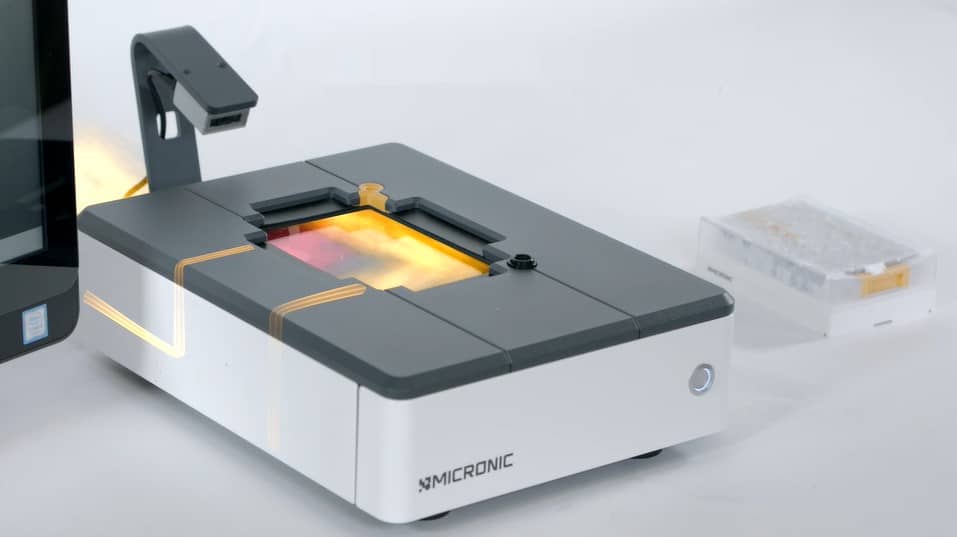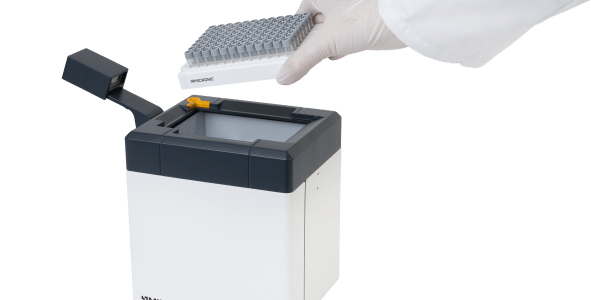

How do you read the 2D codes of your frozen sample tubes?
While working with valuable samples that have been stored at ultra-low temperatures, it is important that the used equipment, for example code readers, can withstand these conditions without failing. While reading the 2D codes on the bottom of the frozen sample tube, it is of utmost importance that the sample stays intact and the reader does not damage the sample by, for instance, warming it up. So how do you read the 2D codes of frozen tubes without getting condensation on the scanning plate and compromising the sample? In this blog post we will explain two different anti-frost system options used for code readers, being an active anti-frost system and a passive anti-frost system, and what the advantages and disadvantages are of these options.
First and foremost, it is important to keep in mind with scanning samples straight from a -80°C freezer, that ice/frost can be present on the bottom of the sample tubes. The scanning plate needs a clear visual of the scan surface, so it is essential that before scanning the ice/frost is removed from the code surface.
Passive anti-frost system
For a passive anti-frost system several things can be deployed, but there is no active warming component in the reader. An example of a passive anti-frost system is a coating on the scanning plate, which ensures that condensation will be minimized and the quality of the samples optimized while reading the code surfaces. A limitation of a passive anti-frost system is that the cold stays on the scanning plate and in the scanner, so that at some point condensation on the scanning plate will take place. Furthermore, with no system in place to remove the cold air from the scanner it can take up to 15 minutes before the condensation on the scanning plate will go away and the code reading can take place again.
Active anti-frost system
The main difference between the passive and the active anti-frost system is that the active anti-frost system helps in keeping the scanning plate at the ideal temperature so no condensation will take place*. An active anti-frost system can do two things to keep the temperature of the scanner under control. On the one side, it can remove the cold air from the scanning plate because of a continuous air flow through the scanner, making sure the cold air does not attach to the scanning plate. On the other side, it can warm up ambient air inside of the scanner, making sure the scanning plate keeps a good temperature to prevent condensation from taking place*. The warming of the air should take place in a controlled environment, making sure the temperature of the scanning plate won’t affects the quality of samples, making an active anti-frost system the most effective solution.
* The scanning procedure for frozen samples must be followed.

